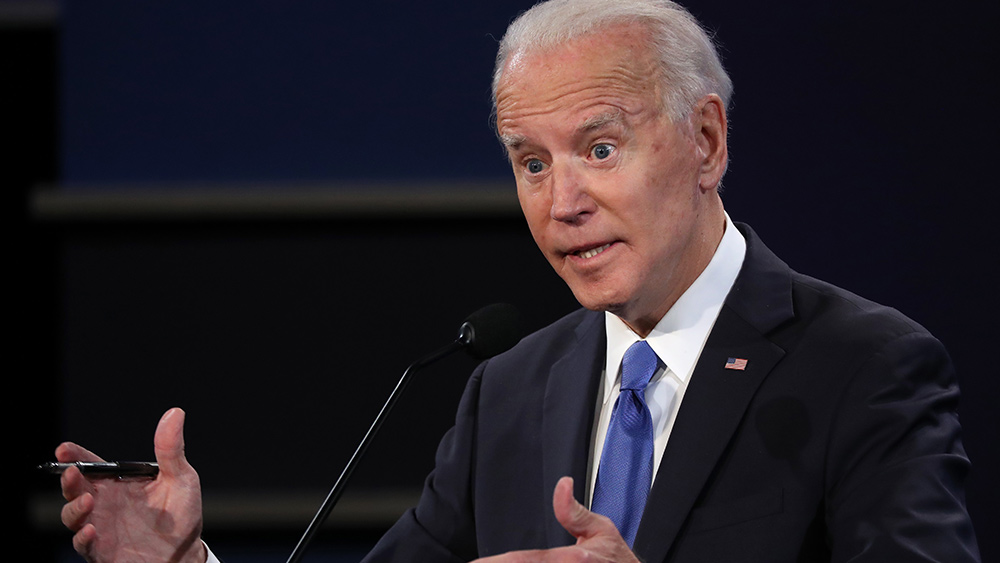Power tips for preppers who want to live off-grid
03/22/2022 / By Zoey Sky

There are many things to consider before you can live off the grid, like where to get food and water and what power source to use. For food, you can grow crops in a home garden and raise animals, but an alternative power source requires more work and research.
If you’re looking for a power source for your off-grid homestead, consider renewable power sources like solar or wind energy. (h/t to ThePrepperJournal.com)
Off-grid living for independent preppers
An off-grid home is disconnected from the electrical grid. It also doesn’t have a connection to a town or regional water supply.
If your home is off-grid, you won’t be able to use any of the public facilities in your area, including garbage disposal.
Even if you’re disconnected from the main power grid, it doesn’t mean you have to live without electricity. With alternatives like solar, wind and hydropower, you can meet your power needs or store the electricity in batteries for later use or emergencies.
Consider the cost of going off-grid
Before you start your journey of self-sufficiency, consider the cost of using off-grid power. Sometimes, the self-generation of electricity may be more expensive than using public utilities.
Off-grid power generation might cost a lot of money, at least in the beginning. To save money when using generators, make it a habit to do oil and filter changes on your generators.
Fortunately, the cost of solar panels has decreased significantly within the last few years. If you purchase them in bulk, a 300-watt panel may cost as little as $75.
If you opt to use wind power, note that windmills are generally inexpensive but they don’t generate as much power.
Using solar panels as a power source
If you’re not having your solar panels installed by an expert, you need to know how to install them yourself. If you don’t know how to install or run the system, consult with a local handyman who can help you.
When using solar panels, monitor them regularly, especially if you have a modest system and live in an area where it rains often. (Related: Tips for setting up an off-grid power system when SHTF.)
Don’t rely on only one energy source
Solar power is a popular choice among off-gridders, but having two or more energy sources means you have a backup if you don’t get that much sun or you have a problem with your solar panels.
When you have two sources of electricity, such as solar and wind, you’ll have a higher level of security. Even if the sun doesn’t shine, you can still rely on wind power for your homestead.
Get at least one power generator
Don’t be complacent even if you have two power sources on your property. If SHTF and both your main and backup energy sources are on the fritz, you can keep devices and appliances running if you have a power generator.
There are many kinds of generators to choose from and they often run on different types of fuels such as diesel, gas and propane. Each kind of fuel has advantages and disadvantages.
Propane generators are quieter but harder to come by, and they’re often more expensive. Meanwhile, diesel generators last longer than other types of generators.
You should also invest in a portable power station, which is basically a large, portable battery. You can recharge a portable power station using electricity or solar energy.
Some power stations can also power larger appliances like coolers or tent AC units, fans, electric blankets or tent heaters and even refrigerators.
Get direct current lights and appliances
You will need lighting and appliances that can use direct current in your off-grid homestead. Most off-grid homes rely on batteries that provide direct current (DC) electricity, but everyday appliances use AC or alternating current normally supplied by electrical plugs in the suburbs.
If you generate your own power, you need an inverter so you may use ordinary home appliances. However, running an inverter consumes a lot of power.
You can save a lot of electricity by shutting off the inverter when it’s not required, but that means DC power must be used for anything that is always operating. If the sun isn’t shining, use DC power from the batteries for lighting and the refrigerator.
Don’t waste energy on heating
Heat production is a major concern if you go off-grid. You can address most issues with solar power, but if you depend only on the panels and deep cell batteries, you can’t make your entire home warm and cozy during winter.
Prioritize maintaining a comfortable temperature in your house throughout the winter months. Keep a slow-burning wood fire in your primary living space so you can keep your main living room warm and have zero power expenditure.
Make sure the heat stays inside your house by having proper insulation for both the walls and the roof.
You should also have huge glass doors and windows facing the direction of the sun for passive heat transfer. The location and size of the windows are some of the most important things you should discuss with your architect and contractor during the construction process. Don’t allow evergreen trees to obstruct winter light.
Plan ahead if you want to live off-grid. Do your research and have two sources of sustainable energy like solar and wind energy and invest in a power generator to cover all your bases.
Watch the video below for more information on what it’s like to live off-grid with solar energy.
This video is from the SHTFPrepping101 channel on Brighteon.com.
More related stories:
Self-sustainability and independence: A beginner’s guide to living off the grid.
Prepper friendly states: Is going off the grid legal where you live?
Sustainable living: 5 Things to consider when farming off the grid.
Sources include:
Submit a correction >>
Tagged Under:
electricity, energy sources, generators, green energy, green living, homesteading, off grid, preparedness, prepper, prepping, prepping tips, self sufficiency, self-sustainability, solar energy, survival, survivalist, sustainable living, wind energy
This article may contain statements that reflect the opinion of the author
RECENT NEWS & ARTICLES
PowerGrid.News is a fact-based public education website published by Power Grid News Features, LLC.
All content copyright © 2018 by Power Grid News Features, LLC.
Contact Us with Tips or Corrections
All trademarks, registered trademarks and servicemarks mentioned on this site are the property of their respective owners.




















